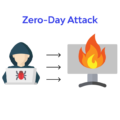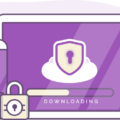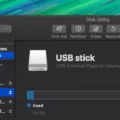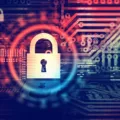Access control software is becoming increasingly important in today’s world, as businesses and organizations need to ensure that their data remains secure. Access control systems are used to identify users and grant them access to certain parts of a network or system. There are several different types of access control software, each with its own features and advantages.
Discretionary Access Control (DAC) is one of the most common types of access control systems. This type of system allows users to decide who has access to what resources on the network or system. DAC works by assigning permission levels based on user identity. This means that each user can be granted different levels of access depending on their role within the organization.
Role-Based Access Control (RBAC) is another type of access control system that assigns users to roles and then grants permissions based on those roles. RBAC typically includes hierarchical structures so that administrators can set up different levels of access for different users or groups. For example, an administrator could create a hierarchy in which certain roles have more privileges than other roles, allowing for more granular control over who has access to what resources.
Attribute-Based Access Control (ABAC) is a newer type of access control system that uses attributes such as user location, IP address, time zone, etc., to manage user privileges. ABAC also allows administrators to customize permission levels based on these attributes, giving them greater flexibility when it comes to granting users access to resources.
Each type of access control system has its own advantages and disadvantages and it’s important for organizations to choose the right one for their needs. In addition, there are many third-party vendors offering a variety of solutions for managing user privileges in an organization’s network or system environment.
It’s important for businesses and organizations to invest in the right type of access control software in order to protect their data from unauthorized users and maintain secure systems overall.
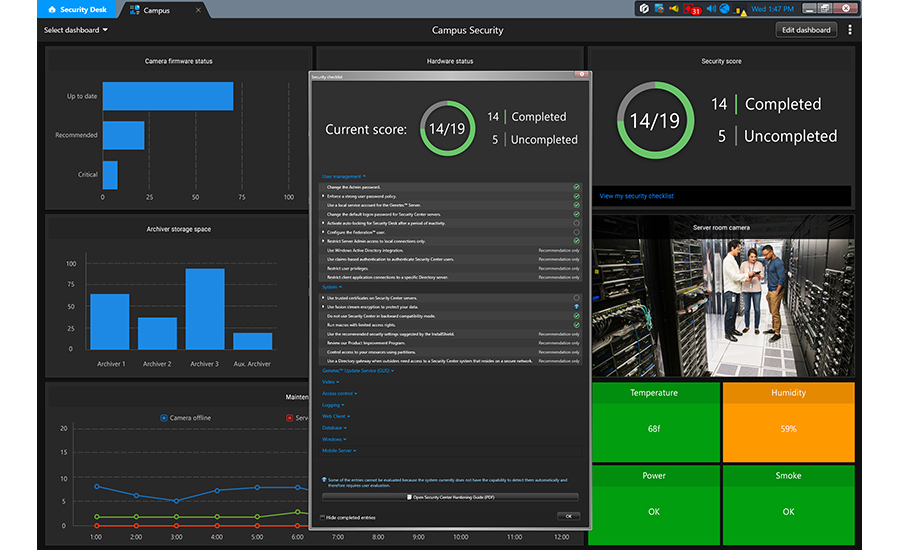
Understanding Access Control Software
Access control software is a type of security system used to regulate and manage access to physical or virtual resources. It identifies users by verifying their login credentials, such as usernames and passwords, PINs, biometric scans, or security tokens. Access control software also provides additional measures for the authentication of user identity, such as multifactor authentication (MFA), which requires multiple authentication methods to verify a user’s identity. The access control software can be used to protect physical facilities and resources, as well as sensitive data stored on computer networks. It can also be used to protect access to confidential information, databases, and applications.
Types of Access Control Software
Access control software is a type of computer program that can be used to regulate or restrict the access of users to certain files, programs, or networks. There are three main types of access control software: Discretionary Access Control (DAC), Role Based Access Control (RBAC), and Mandatory Access Control (MAC).
Discretionary Access Control (DAC) is the most commonly used type of access control software. This type of access control allows administrators to specify which users have permission to use which resources. This can be done based on file ownership or user membership in certain groups. DAC may also provide additional features such as setting password policies and creating user profiles.
Role Based Access Control (RBAC) is another form of access control software that uses roles or groups to determine which users have permission to use certain resources. RBAC can be used by organizations that need to restrict user access based on their job role, such as a hospital where only certain personnel have permission to view patient records. RBAC also allows organizations to easily assign different levels of access rights when new employees are added to the system.
Finally, Mandatory Access Control (MAC) is a form of access control software that is primarily used in highly secure environments such as government agencies and military installations. MAC allows administrators to set up multiple security levels with different rules for each level, ensuring only authorized users are able to view sensitive data. MAC also provides much more granular control over what specific users are allowed to do within the system than DAC or RBAC.
Types of Access Control
The four main types of access control are Mandatory Access Control (MAC), Role-Based Access Control (RBAC), Discretionary Access Control (DAC), and Rule-Based Access Control (RBAC or RB-RBAC).
Mandatory Access Control is a system where users are assigned levels of access to resources based on their job roles, and the administrator is responsible for setting these levels. MAC is typically used in military or government organizations where security needs to be very strict.
Role-Based Access Control assigns users specific roles and privileges, which determines what type of access they have to certain resources. This type of system is best suited for medium to large organizations that have multiple departments with different roles and responsibilities.
Discretionary Access Control allows users to set permissions on their own files and folders. This type of system gives users the freedom to control who can access their information, while still allowing the organization to maintain control over the overall system security.
Rule-Based Access Control uses rules set by an administrator that define which users have access to resources at any given time. This type of system is best suited for larger organizations that need more granular control over who has access to certain resources at any given time.
The Most Common Access Control System
The most common access control system is Role-Based Access Control (RBAC), which is a system that determines access based on users’ roles within an organization. This type of access control ensures that lower-level employees cannot gain access to high-level information, as it grants only the necessary privileges to users based on their roles. RBAC makes it easier for companies to manage and monitor user access, as well as ensure security and compliance with regulatory standards.
The Five D’s of Access Control
The 5 D’s of access control are a set of security measures designed to protect a site from unauthorized access or malicious attack. They are: Deter, Detect, Deny, Delay, and Defend.
Deter: This involves making the site as unappealing to potential attackers as possible. This can be done through having visible physical security such as fences or guards, and also through more technological measures such as biometric authentication systems.
Detect: This involves monitoring the site for any suspicious activity that could indicate an attack is in progress or about to occur. This can be done through CCTV surveillance and other electronic means such as intrusion detection systems (IDS).
Deny: This involves making sure no one can gain access to the site without permission. This is achieved by having strong authentication measures in place such as passwords and two-factor authentication systems.
Delay: This involves making it difficult for attackers to penetrate the site’s defenses even if they are able to gain access. This can be done by using technologies like firewalls and limiting the amount of time an attacker has access before they are locked out.
Defend: Finally, this involves having a plan of action if an attack does happen so that you can respond quickly and effectively to mitigate any damage that has been caused. This includes procedures for dealing with breaches, emergency response teams and backup plans in case of a complete system failure.
The Strength of Access Control Systems
The strongest access control is Mandatory Access Control (MAC). MAC is the most secure type of access control, as it provides a strict system for controlling and managing access to information and resources. It requires that only the system’s owner or administrator can control and manage access, and dictates that people are given access based on different security levels and information clearance. For example, if an employee needs to access sensitive data, they will be assigned a security level based on their job role, which will then dictate what they can see. This means that only those who need to know the information have access, providing a high level of protection against unauthorized disclosure.
Categories of Access Controls
1. Directive Access Control: Directive access control is a set of rules and regulations that organizations put in place to determine who has access to certain resources. This type of access control is often used to protect sensitive data, such as personal information and financial records. It usually involves setting up authentication methods, such as passwords, tokens, or biometrics, that must be provided by users before they can gain access to the system or data.
2. Deterrent Access Control: This type of access control is designed to prevent unauthorized access by making it difficult for unauthorized users to gain entry into the system or data. Examples include physical barriers such as fences and locks, as well as technological solutions like firewalls and encryption.
3. Compensating Access Control: Compensating access control is used when organizations cannot completely eliminate the risk of unauthorized access but can reduce the likelihood by taking steps to make it more difficult for an intruder to gain entry into the system or data. For example, this type of access control could involve using two-factor authentication or implementing a policy that requires all employees to use strong passwords.
4. Detective Access Control: Detective access control involves regularly monitoring user activity on the system or network in order to detect any suspicious behavior or attempts at unauthorized access. This type of control uses audit trails, logs, and other types of monitoring tools in order to spot any potential security breaches before they can do serious damage.
5. Corrective Access Control: Corrective access controls involve taking steps after a security breach has occurred in order to limit any further damage from being done while also restoring any damage that may have already been done. Examples include revoking user permissions and changing passwords after a breach has been detected and contained.
6. Recovery Access Control: Recovery access controls are designed to restore any lost data after a security breach has occurred. Organizations typically use backup systems and tools designed specifically for restoring lost data in order to minimize any disruption caused by a breach and minimize the amount of time it takes for operations to return back to normal after an attack has been contained.
7. Preventative Access Control: Preventative access controls are measures taken ahead of time in order to protect against potential security breaches before they occur or become serious issues for an organization’s operations. Some examples include implementing strong password policies, regular employee training on cyber security best practices, installing firewalls and intrusion detection systems on computer networks, and regularly patching vulnerable software applications.
The Best Access Control Method
The best access control method for a given situation depends on the level of security needed and the resources available. Generally speaking, mandatory access control (MAC) is considered to be the most secure type of access control, as it requires users to be explicitly authorized for data and other resources. This makes it an ideal choice for organizations that need to protect highly sensitive data or assets. MAC can be more difficult to maintain than other methods, however, as it requires administrators to explicitly grant access rights to each user or group. If resources are limited, other methods such as Role-Based Access Control (RBAC) may be more suitable. RBAC assigns users with roles-based privileges and is less resource-intensive than MAC. Ultimately, the best method of access control depends on the organization’s needs and requirements.
Elements of Access Control Software
1. Authentication: This is the process of verifying a user’s identity and granting access to a system or resource. Authentication can be done through various means, such as passwords, biometrics, physical tokens, or digital certificates.
2. Authorization: This is the process of determining whether an authenticated user has permission to access a system or resource. Authorization involves setting up and managing permissions for different users and groups in the system.
3. Logging and Auditing: This feature enables administrators to keep track of user activities on the system by logging events and changes made by users. Logging and auditing are important for security purposes as they allow administrators to track suspicious activity on the system or investigate potential security breaches.
4. Access Control Lists (ACLs): ACLs are used to set up rules that define which users have access to which resources within a system. These rules specify who can view, modify, or delete certain data or resources within the system, as well as what type of tasks they can perform with them (e.g., read-only).
Implementing Access Control
Access control is a security measure that controls who has access to information, systems, and services within an organization. To implement access control, organizations must first identify the resources that need to be protected and then define who should have access to those resources. Once the resources are identified and access rights defined, organizations must implement appropriate technical measures to ensure that only authorized users have access to the resources. Examples of technical measures include user authentication such as passwords or biometrics, encryption of data in transit or at rest, and access control lists or roles-based authorization for granting specific privileges to users. Organizations must also ensure that proper administrative processes are in place for adding new users and changing existing user privileges. Furthermore, organizations should review their access control policies on a regular basis in order to identify any weaknesses or unauthorized changes in the system.
Conclusion
In conclusion, access control software is an invaluable tool for businesses and organizations to protect their data and systems from unauthorized access. By using one of the three main types of access control systems, discretionary access control (DAC), role-based access control (RBAC), or attribute-based access control (ABAC), businesses can ensure that only the right users have access to specific areas of their network. Furthermore, implementing additional measures such as multifactor authentication (MFA) further strengthens the security of a system. With the right access control software in place, companies can rest assured that their data and systems are safe and secure.


